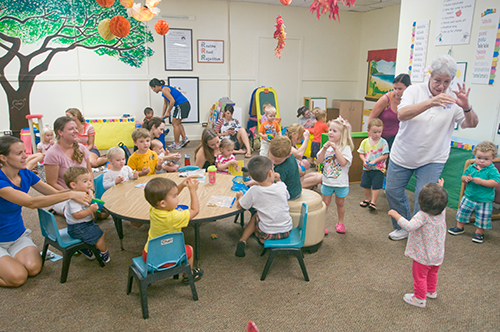Mar 28 2016 Lessons in establishing transparency of viewpoints from the Henderson-Hopkins School
 From The Intersector Project Case Library: Building Centers for Childhood Education in East Baltimore
From The Intersector Project Case Library: Building Centers for Childhood Education in East Baltimore
By the early 2000s, East Baltimore faced many challenges, including a lack of adequate educational resources and safe public spaces. Only 24 percent of adults in the community could read above a third-grade level, and opportunities for economic development were limited. In 2003, the City of Baltimore created a development corporation, East Baltimore Development, Inc. (EBDI), which would “revitalize, re-energize, and rebuild the East Baltimore neighborhood.” EBDI contracted with developers to build out the master plan and in 2010, with community input, set about opening a new school. After two years of struggles with performance and behavior, EBDI leadership concluded that EBDI was not equipped to own and operate a school.
With strong backing from Johns Hopkins University, EBDI decided to unite a range of partners to transform the school into an innovative community resource. Johns Hopkins President Ron Daniels asked Andy Frank, his Special Adviser on Economic Development, to convene the stakeholders (EBDI, Johns Hopkins, The Annie E. Casey Foundation, The Harry and Jeannette Weinberg Foundation, the community, and the City) to begin planning for a permanent elementary/middle school: Elmer A. Henderson: A Johns Hopkins Partnership School and the Harry and Jeanette Weinberg Early Childhood Center. Henderson-Hopkins, as the school is called, is the first public school building built in East Baltimore in more than 20 years.
A major challenge for the project was managing costs, as there were conflicting opinions on how to do so. In our case study interview, Andy said that natural tensions arose between stakeholders who approached the project from different perspectives – such as the architect or the the school’s operator, Johns Hopkins School of Education – and those that worked from a cost-management perspective, such as the school’s owner, EBDI. But these conflicts were resolved by openly discussing each stakeholder’s goals and perspectives, and creating the opportunity to reach consensus on a budget. That process included making information about available financial resources transparent and highlighting the financial demands that might put the project in the red. As the process unfolded, the partners realized that each sector had been operating with only partial information about the other sectors’ work. Andy took responsibility for collecting all of the information and facilitating decision making around what could be funded, “with a lot of advice,” he said. This included weekly presentations from a construction manager who collected details on any outstanding cost and funding issues. Once all of the partners collaboratively agreed on financial parameters, resolving conflicts around the allocation of resources became much easier.
Andy’s efforts to improve communication between partners in this collaboration illustrates a tactic The Intersector Project Toolkit refers to as Establish Transparency of Viewpoints – the creation of an environment in which partners can communicate openly, allowing the collaboration to address partners’ differing priorities. By creating channels to hear and respond to partners’ perspectives and concerns, the collaboration acknowledges the conflicting opinions that can arise from the distinct values and goals of each sector, establishes a forum for consensus-building, and nurtures cross-sector understanding.
Open environments are critical to nearly every aspect of collaboration design and implementation, particularly those that require partners to come to consensus concerning issues on which they are likely to have differing perspectives; building a common fact base, agreeing on measures of success, establishing a governance structure, or allocating resources, as we see in this example, are just a few examples. In an open environment, partners trust each other, have equal opportunities to express their diverse opinions, and perceive that they are able to raise concerns and grievances without fear of retaliation. In the absence of an open environment in which partners can address their differing perspectives, partners may feel disenfranchised from the collaboration process, decreasing the likelihood that they will compromise with others.
Henderson-Hopkins now serves 504 students in grades K-7. The 7-acre campus will eventually serve 567 in the elementary school and 180 students in the early-childhood center. Maximum class size is 23 students, and the K-8 curriculum is based on the Success For All model – innovative work from the Johns Hopkins School of Education, giving students access to the latest developments in pedagogy. When Johns Hopkins became the operator of the original EBDI school, there was a significant literacy challenge – only 39 percent of students were proficient in reading and writing for their grade level. Now, 67 percent of students are proficient, and that rate is improving. As John Hopkins works to uplift educational performance, the board is in the process of making the shared spaces available to the East Baltimore Community.
